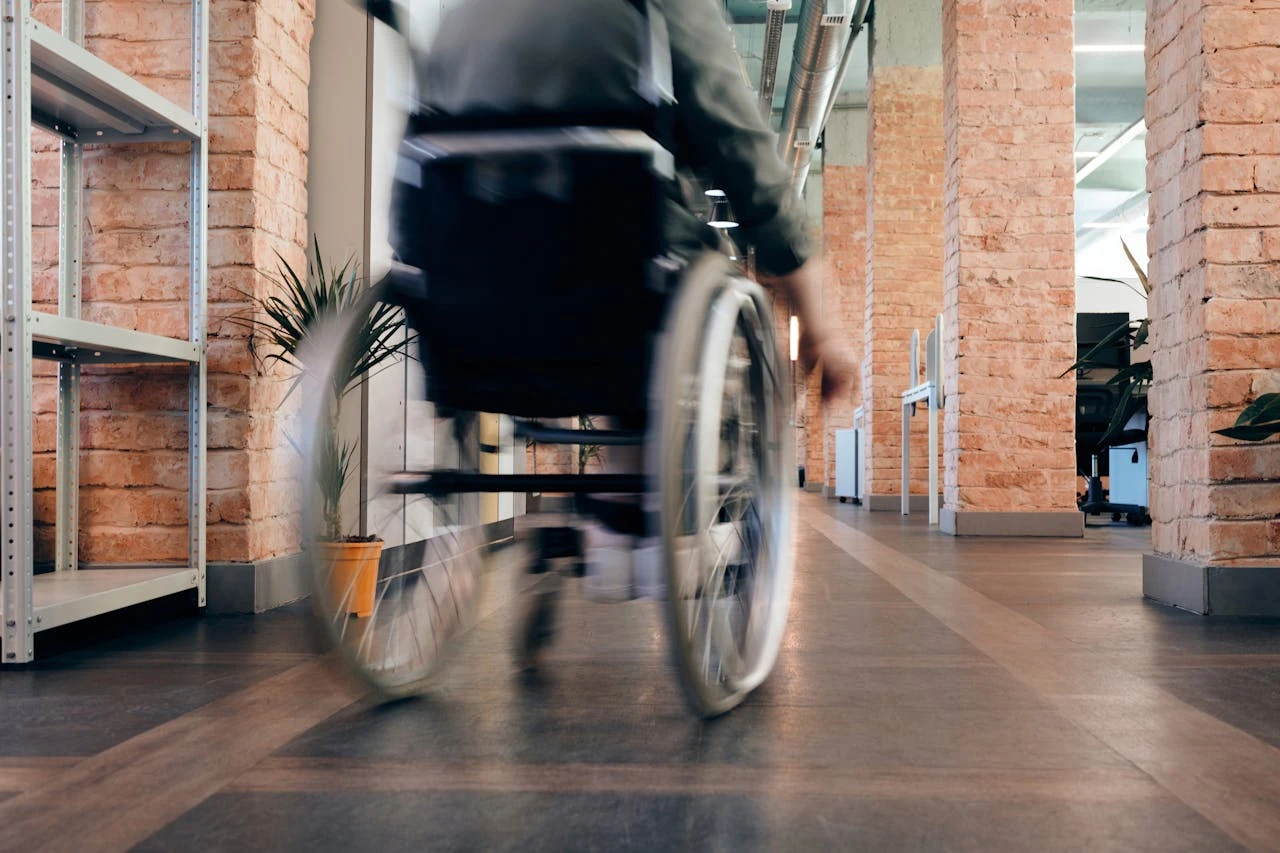Life with a Wheelchair: How to Get Used to a New Companion
 Photo by Marcus Aurelius on Pexels
Photo by Marcus Aurelius on Pexels
Switching to a wheelchair hits hard. It shakes up everything – not just how you get around, but your daily routines and, honestly, the way you see yourself. Sometimes it’s a short-term thing. Sometimes it’s not. Either way, the reality settles in quickly. The tools and support you pick up along the way? Those start to matter. Suddenly, this so-called limitation looks more like a partner – stubborn, yes, but always there – as you find new ways to show up for yourself and get things done.
The Emotional Transition: Acceptance Takes Time
Let’s not sugarcoat it: it’s an emotional ride. There’s that first punch of shock, maybe even denial, the drag of frustration. Grieving your old mobility is normal. It’s not a weakness – it’s proof you’re still in there, still fighting for some kind of normal.
Honestly, therapy helps. Sometimes you need someone outside your circle, or a group who’s been in the same spot, to help you process the mess and not get stuck inside your own frustration. Real talk with people who get it is its own kind of relief.
But bit by bit, there’s a shift. The old story – that a wheelchair confines you – stops making sense. It’s not a cage. It’s a way forward, awkward or not. The more you believe that, the easier it gets to reclaim your days and reshape what independence looks like now. That new sense of self? Takes a while. But it’s possible.
Physical Adaptation: Learn the Basics
Picking a wheelchair isn’t just about flipping through a catalog and pointing to the one that looks sleek. Your whole setup – manual, power, whatever – has to fit your body, your lifestyle, and where you live. A folding power wheelchair with modern design is a nice choice for outdoor adventures, while a manual wheelchair is great for those who have the ability to propel themselves. Get the wrong fit and you’ll notice it fast: sore shoulders, aches, trouble getting around corners. Don’t go it alone. An occupational therapist or rehab pro is worth their weight here. They’ll help make sure you don’t get stuck with something that just doesn’t work for you.
At first, working those tight turns or backing up without taking out a lamp? Awkward, maybe even a little nerve-wracking. Stick to home turf to practice – the stakes are low and you know the territory. Only after that, try the wild world of grocery aisles or parks. Wheelchair skills classes aren’t just for beginners; they actually make a huge difference. It’s not just technique you’ll pick up – it honestly makes you less anxious about the whole thing.
Pushing a wheelchair, shifting from bed to chair, and back – your arms and shoulders aren’t used to being this busy. Learn how to move without wrecking your joints. Find techniques that work, and stay away from shortcuts that hurt you long-term. Most people end up needing some arm and shoulder exercises (yeah, maybe even some stretching). Adaptation isn’t just about the chair – it’s about your body working with it, not against it.
Home Life: Modify Your Environment
Room-by-Room Assessment
One of the biggest changes will be how you interact with your living space. Start by assessing:
- Entrances and hallways: Are they wide enough?
- Bathroom: Is there space for transfers? Can grab bars be installed?
- Kitchen: Are everyday items within reach?
- Bedroom: Is the bed at a transfer-friendly height?
Making small changes – like rearranging furniture, adding ramps, or installing lever-style door handles – can drastically improve comfort and accessibility.
Assistive Technology
Smart home gadgets, desks that move up and down, random grabbers and reachers, shower chairs – they aren’t just handy, they change what’s possible. Sure, they might cost a bit upfront, but for the freedom and all the time you get back? Usually worth it.
Out and About: Face the World
Visiting Public Spaces
Accessibility laws like the ADA have definitely nudged things in the right direction. Still, plenty of places haven’t caught up. Before heading somewhere new, check ahead. Call, poke around online, get real info about stuff like:
- Whether there’s parking that actually works for you
- If the bathrooms are accessible (not just technically, but in real life)
- Elevators – are they working, or “out of order” for another month?
- The kind of terrain you’re up against
Apps like Wheelmap or AccessNow help too. People leave honest reviews, so you know what you’re walking (or wheeling) into.
Traveling with a Wheelchair
Planes, trains, buses – they’ve all got their own rules. The fewer surprises, the better. Book early, tell them what you need, and give yourself room to deal with whatever comes up. Never hurts to have a repair kit stashed somewhere, and knowing a quick fix or two can save your trip from total chaos.
Relationships and Social Life
Let’s be real: people you’re close to might have no clue how to help or what even to say. You have to spell things out. Set boundaries, be direct, and ask for backup when you want it. The more you talk, the easier it gets – and the stronger those connections usually become.
Needing a wheelchair doesn’t sideline you from all the things you care about. Maybe you have to go at it a different way, but hobbies, sports, nights out – they’re all still around. Adaptive sports, dance, travel – there’s a program or event for almost every interest out there, and a lot of communities put together stuff that’s actually inclusive, not just on paper.
Get Back to Work or School
Going back to work, starting fresh somewhere new, back in class – it all matters. Your rights aren’t up for debate. Schools and jobs have to give you reasonable accommodations. If something’s in your way, talk to HR or the disability office or whoever handles that stuff. You deserve what you need, no begging required.
Let’s be honest: using a wheelchair shifts how your day works. You’re allowed to slow down, stop, and catch your breath. Build in breaks. Mark out real rest time. Tell people – plainly – when you’ve had enough or need things done differently. Don’t treat your energy like it’s endless. Treat it like it actually matters, because it does.
Staying Healthy in the Long Term
Long hours sitting can turn into real problems: pressure sores, poor blood flow, and annoying infections. So, hit your checkups. Push through pressure reliefs. Stay clean – and know what trouble looks like before it shows up.
Being active doesn’t end with a wheelchair. You can find plenty of sports and activities that are wheelchair-friendly – wheelchair basketball, adaptive yoga, handcycling, all stuff that keeps the heart and brain running right. Movement keeps you feeling like yourself, whatever that looks like now.
Look Ahead with Confidence
This isn’t just adjusting – it’s inventing how you live. You’ll have to get tough, inside and out. But somewhere in the middle of the mess, new pieces of you show up: grit, creative solutions, maybe even a whole new crew backing you. You’ll hit walls, sure. You’ll also break through some you never saw coming.
Every time you roll out the door, that’s another day you pick movement, freedom, and saying yes to the world. The chair won’t just be equipment anymore – it turns into something like a sidekick, a push toward living the way you want, not just the way you have to.
Final Thoughts
Maybe this switch to wheels happened slowly, maybe it flipped everything overnight – either way, it’s your life. People get it wrong: you aren’t what you can’t do standing up. You’re what you keep figuring out, how you build around and past the bad days. Stopping isn’t the story. Figuring out your next move is.
And move forward – you will.
